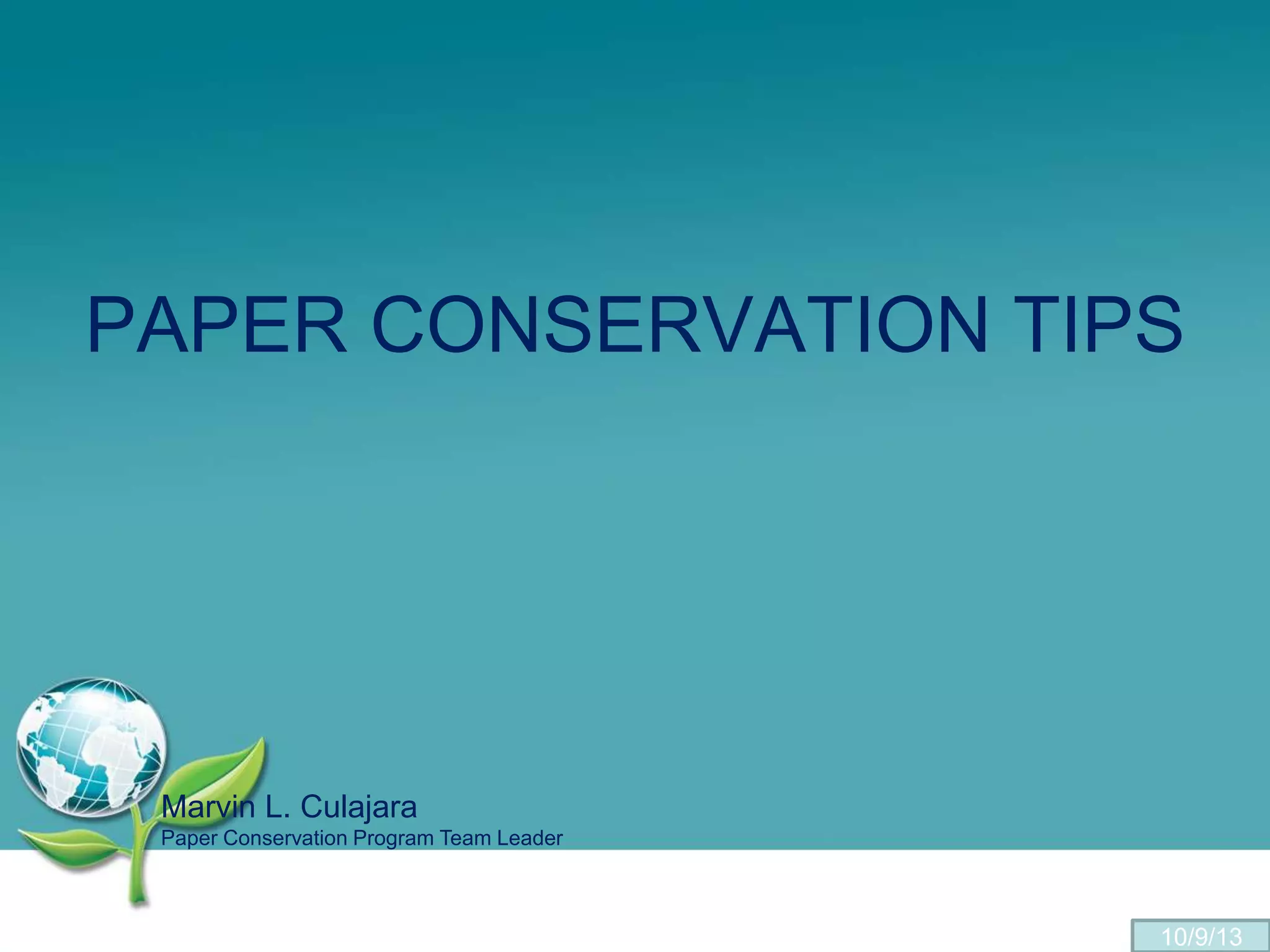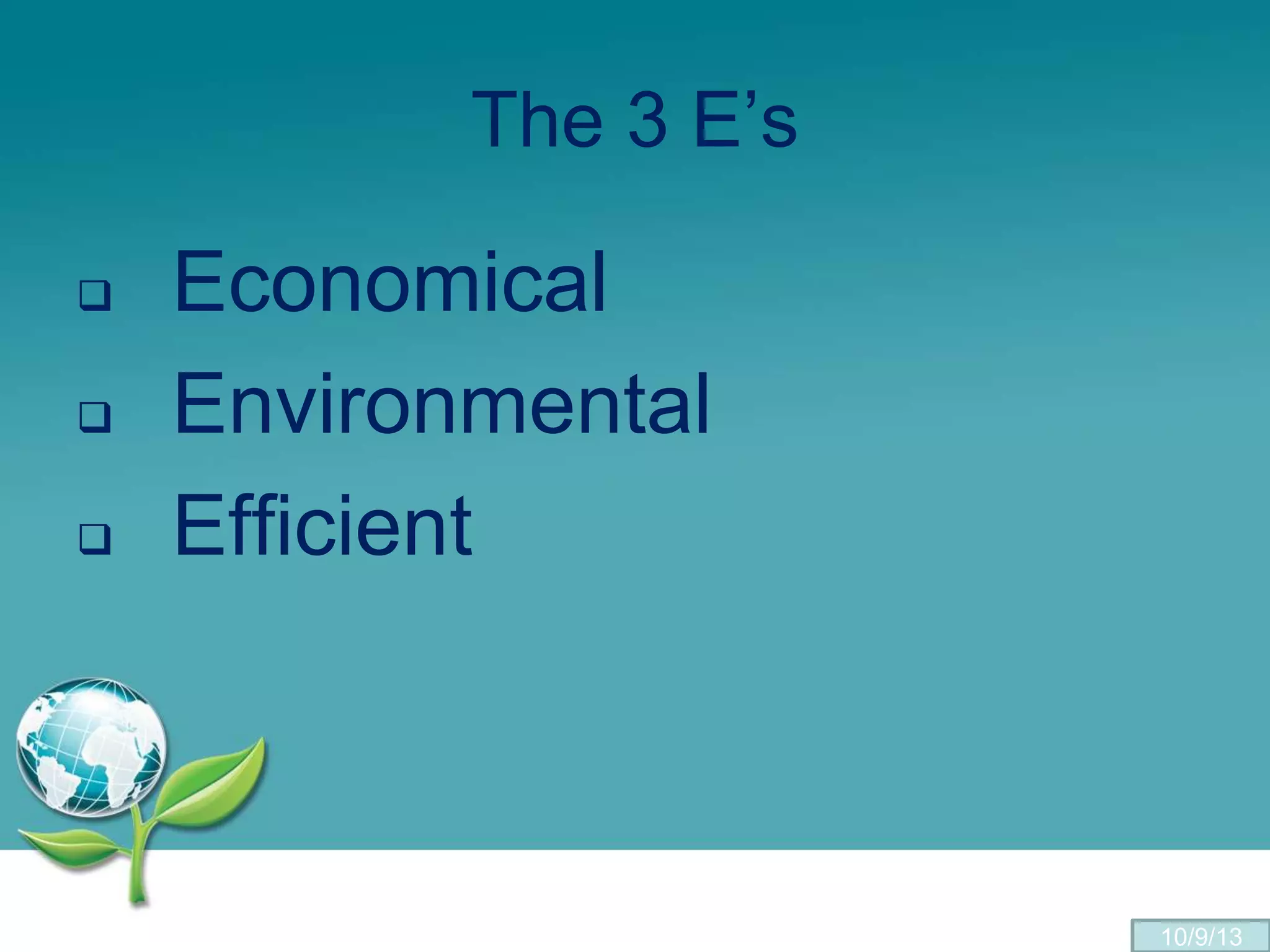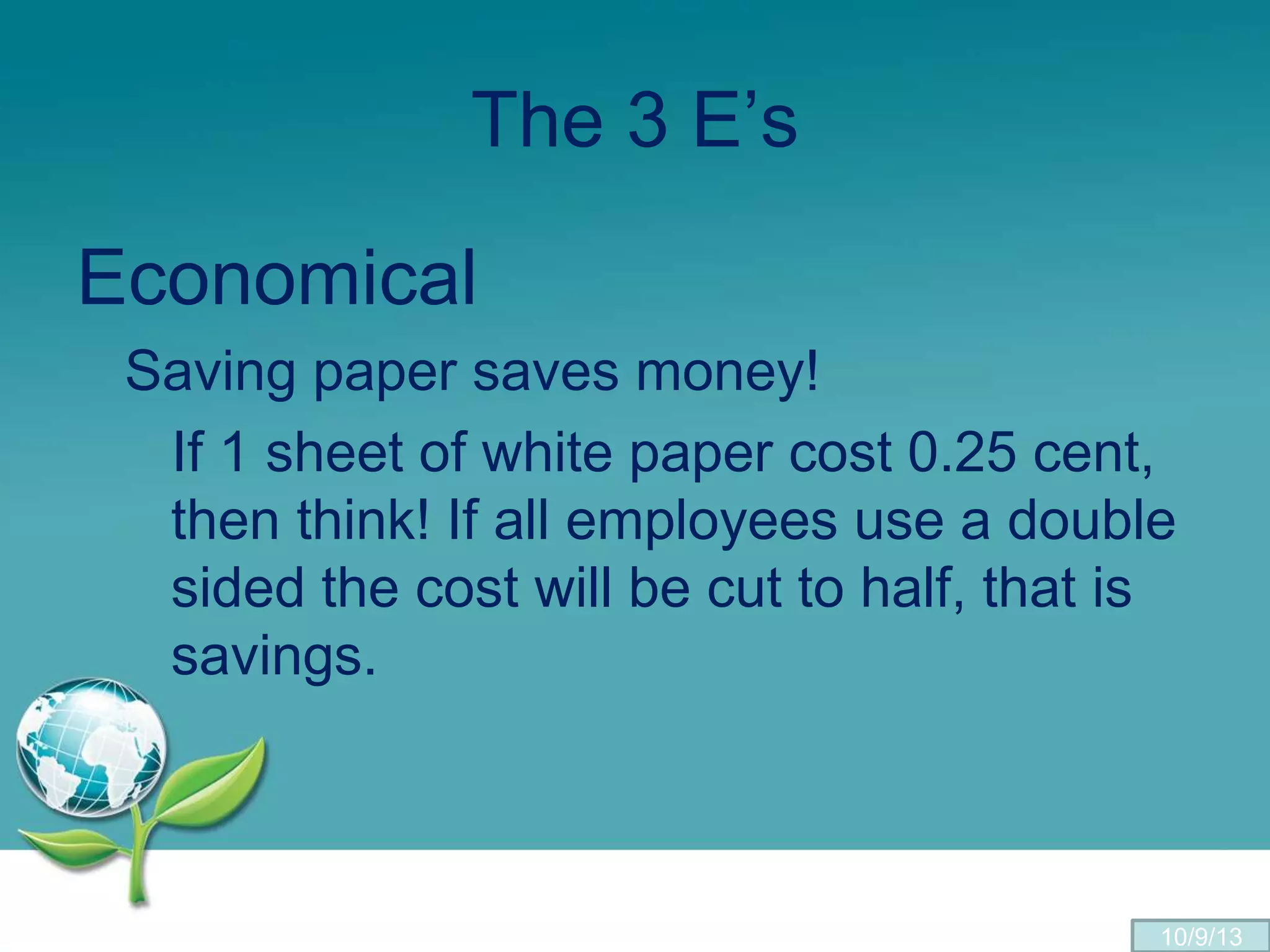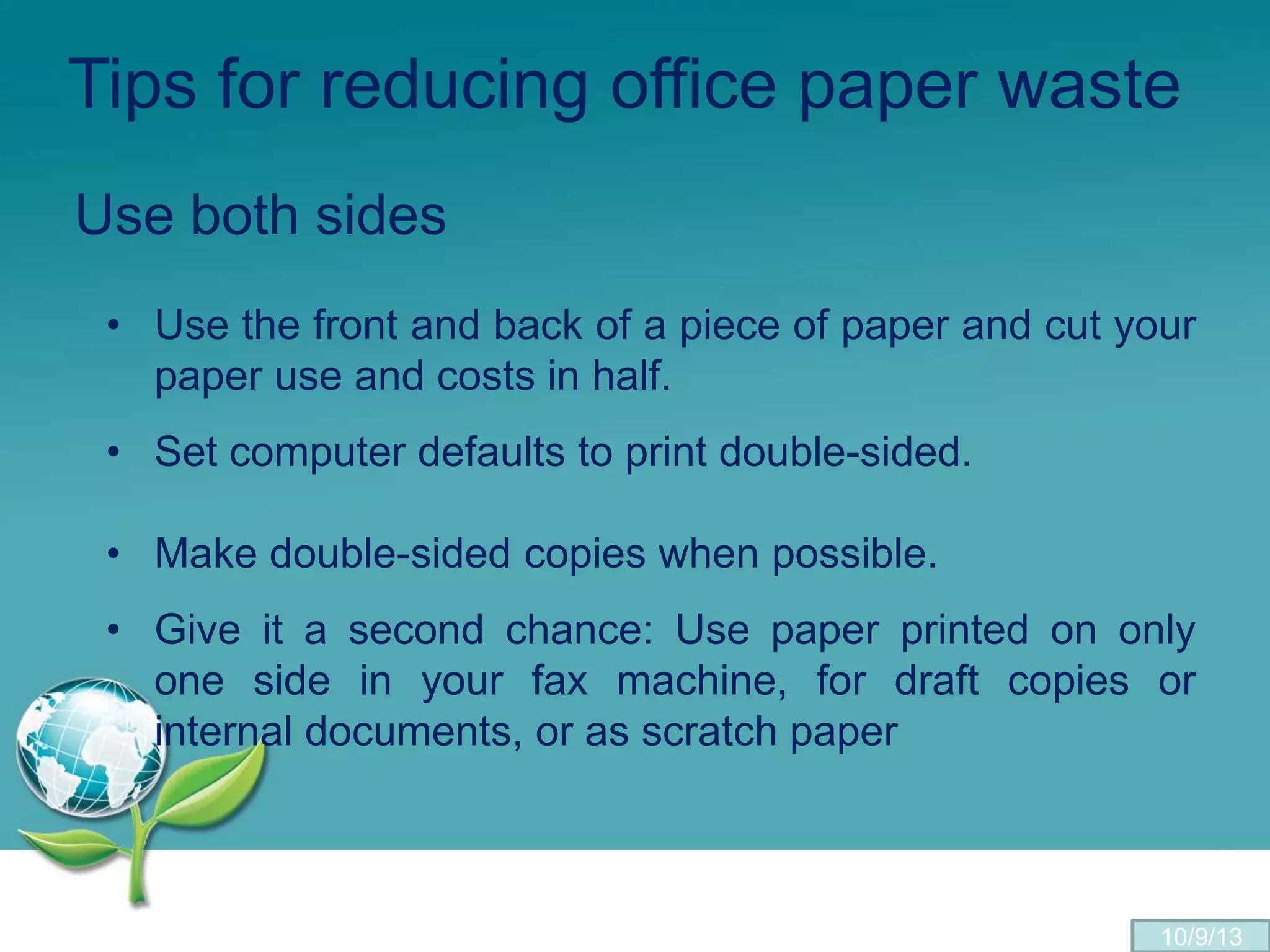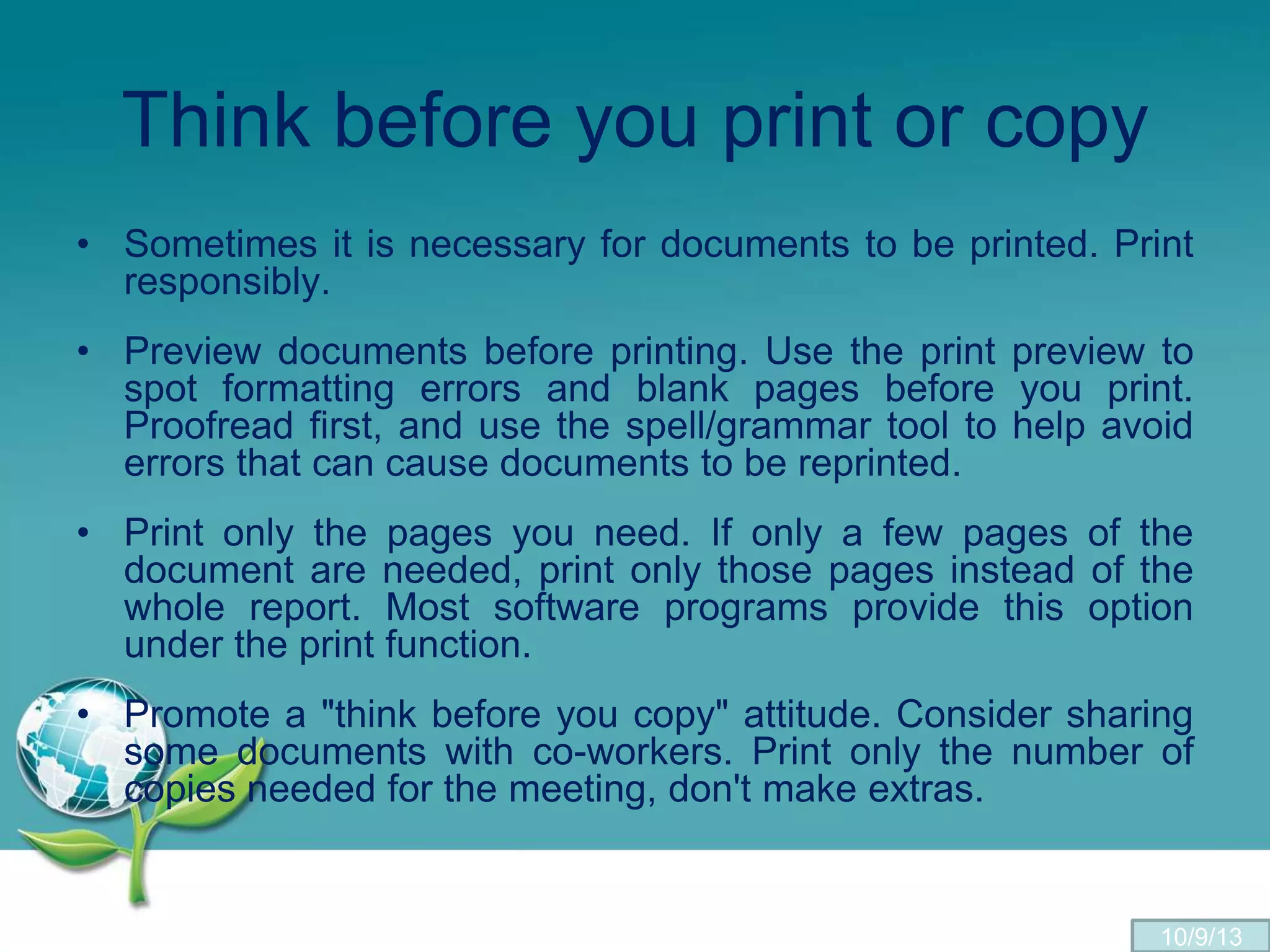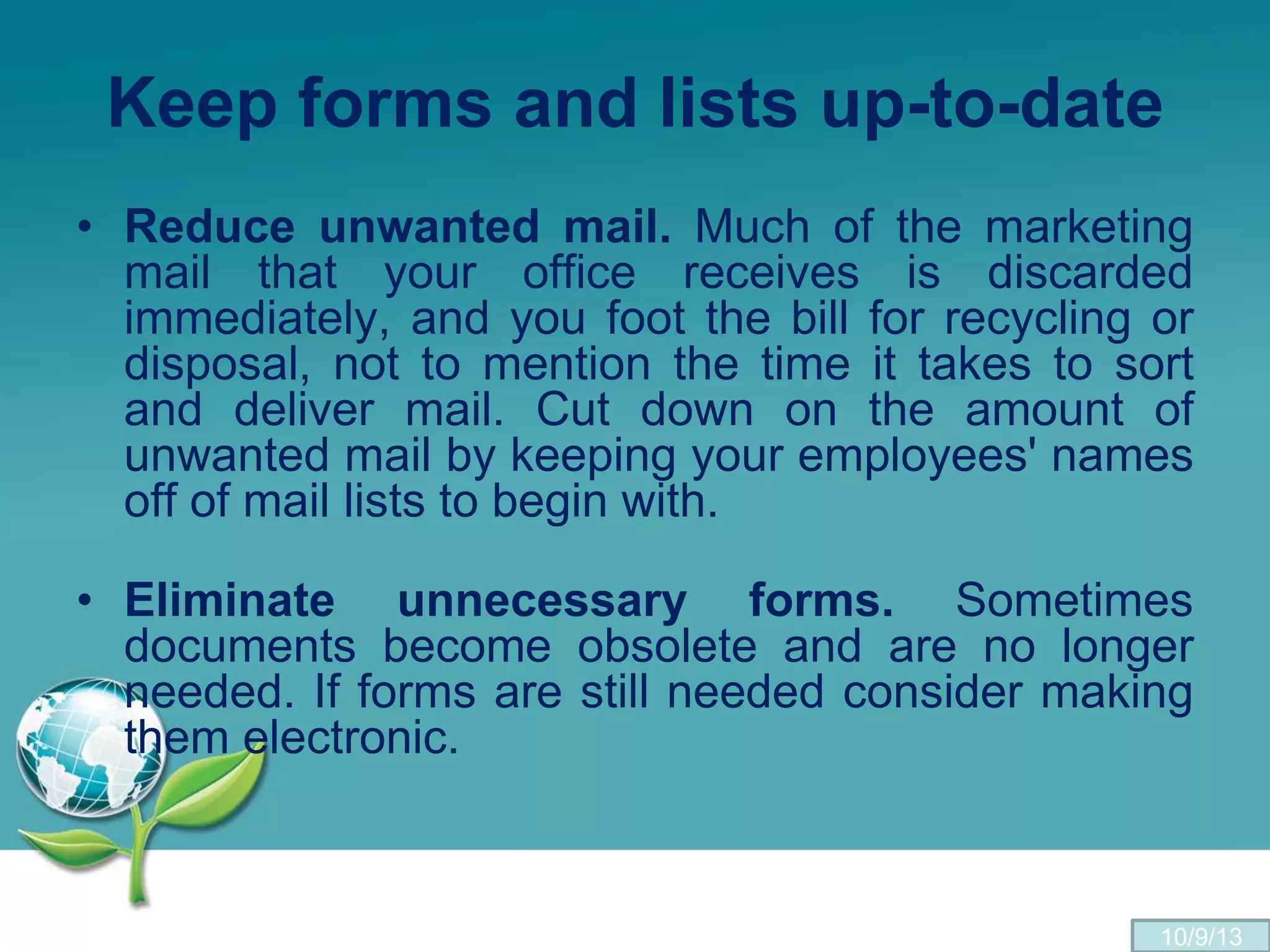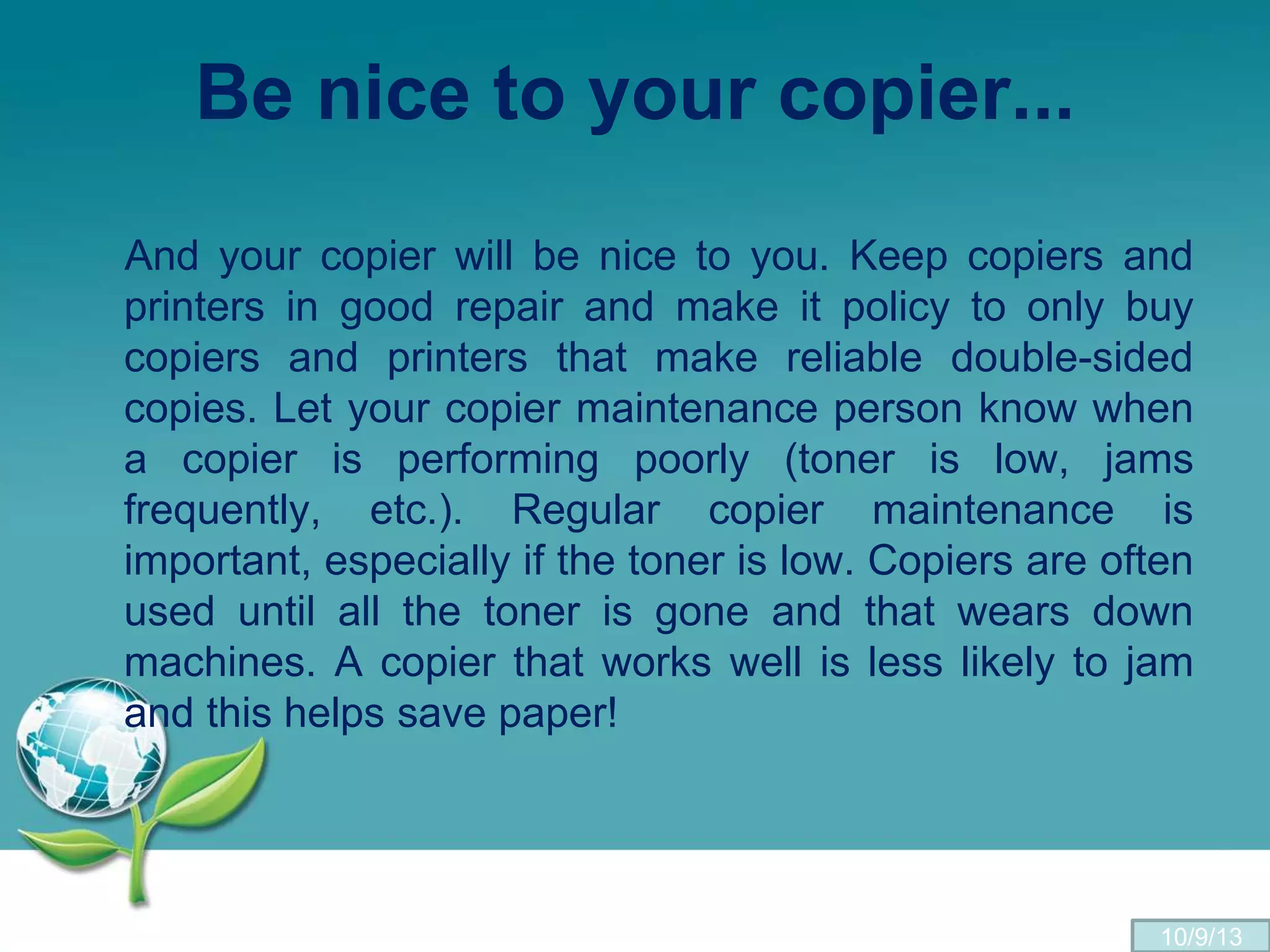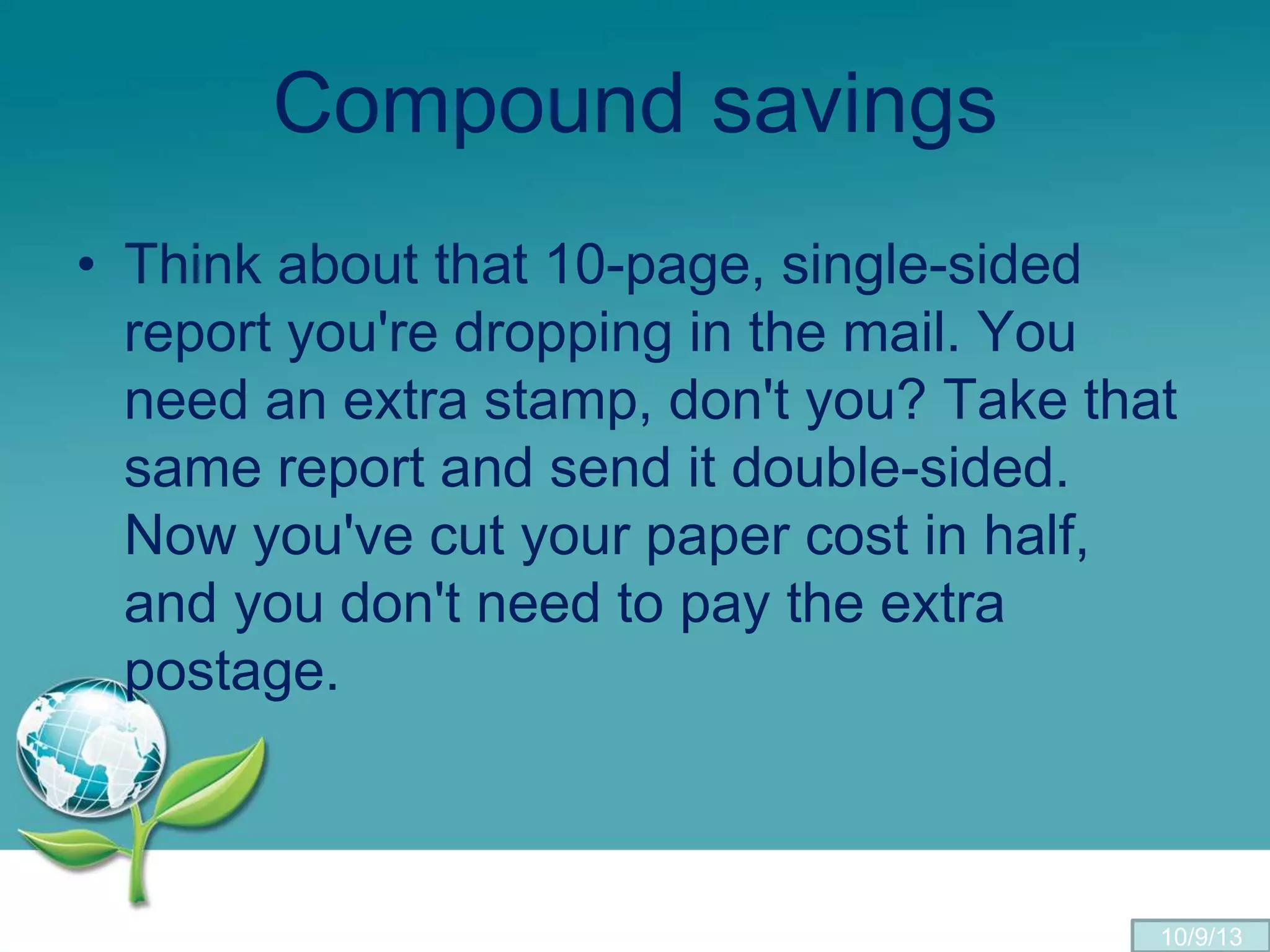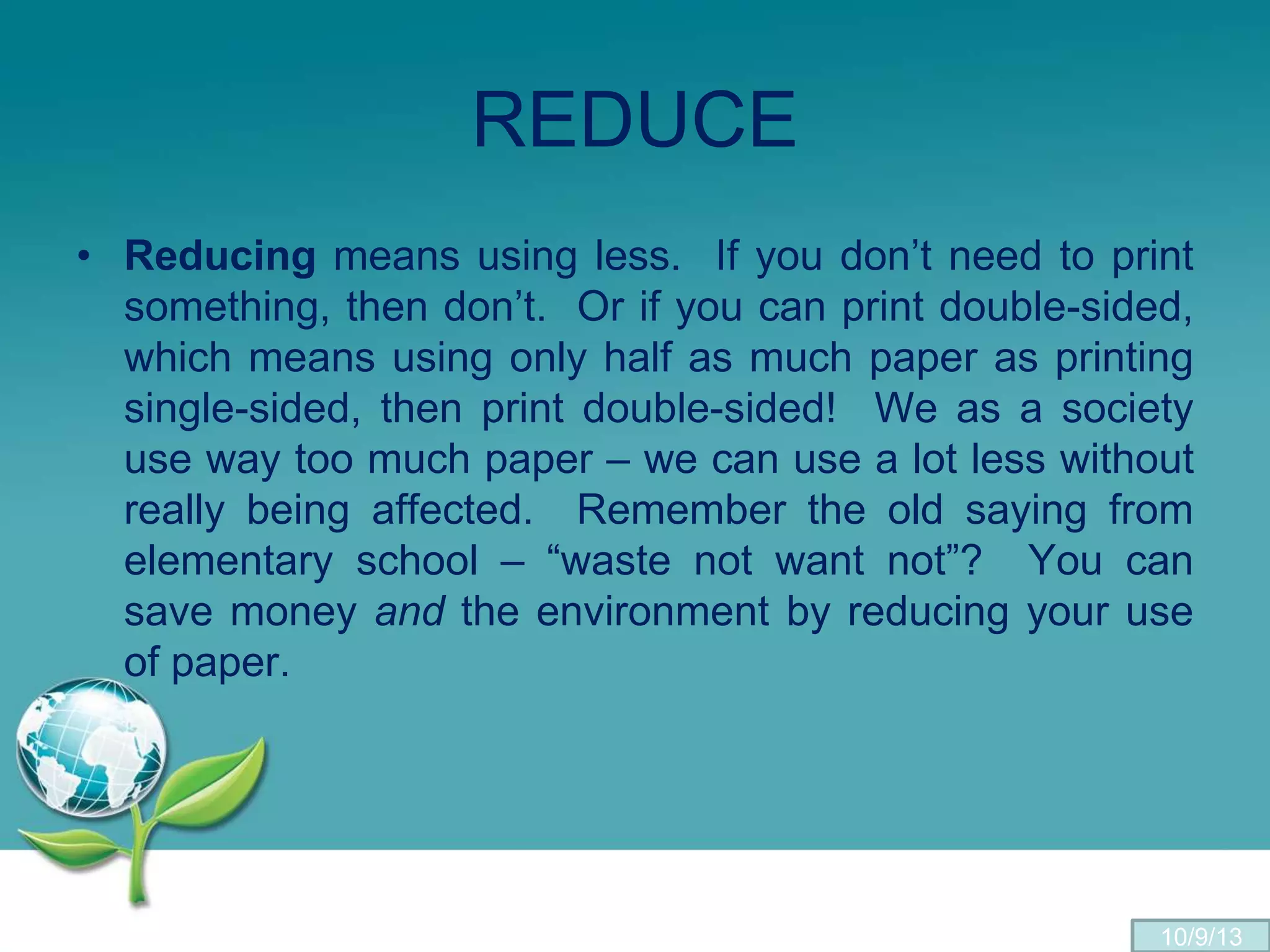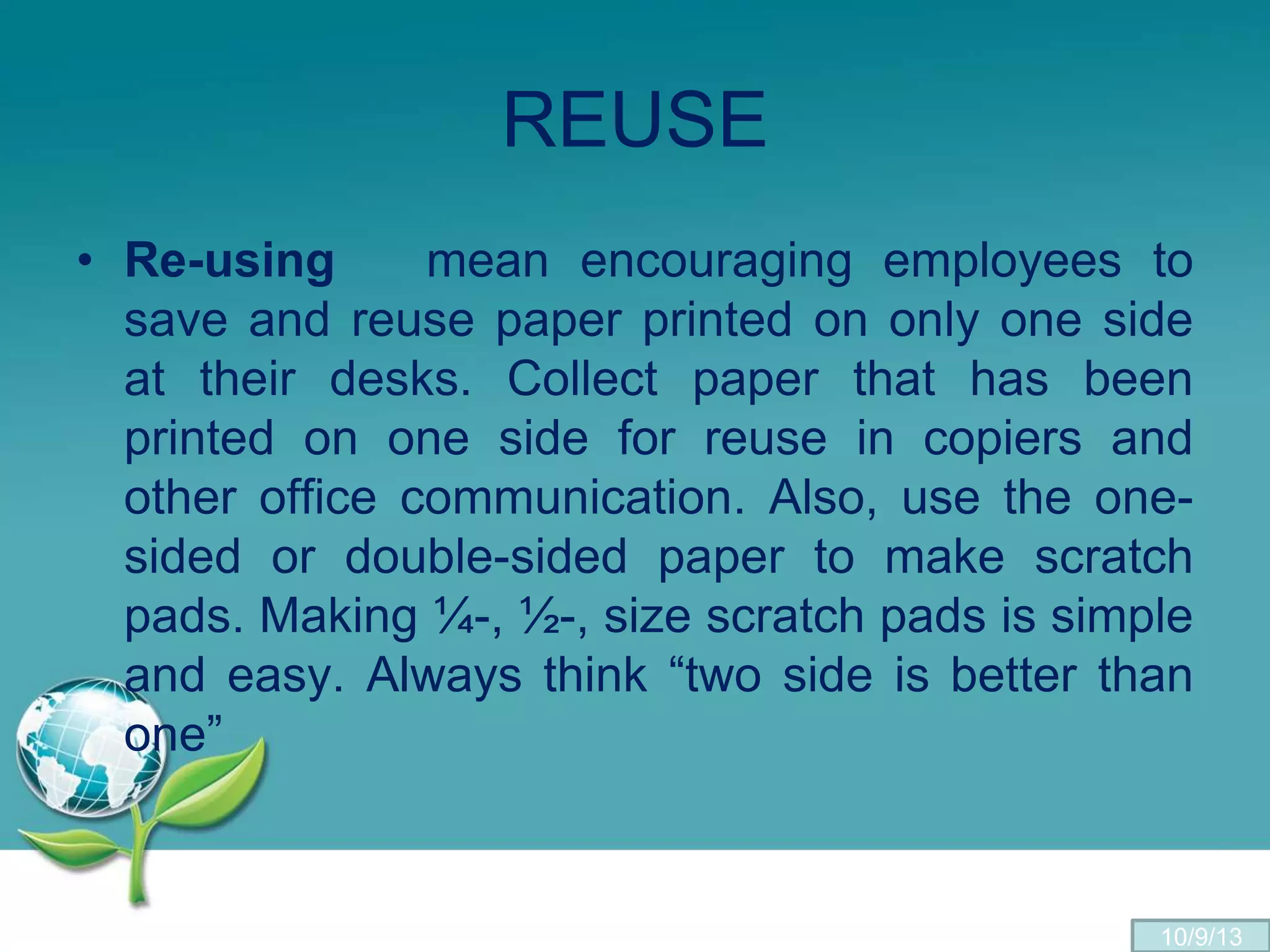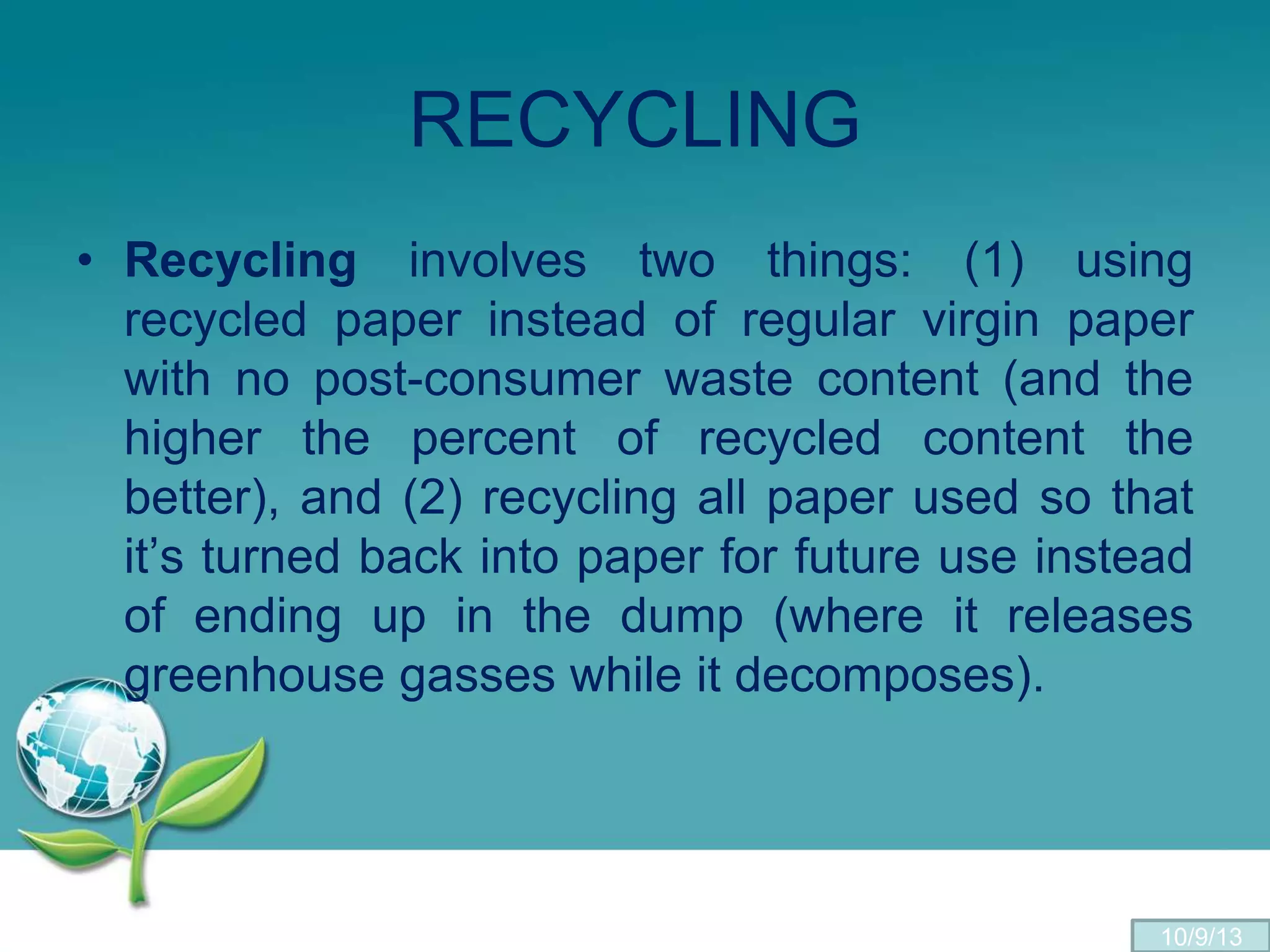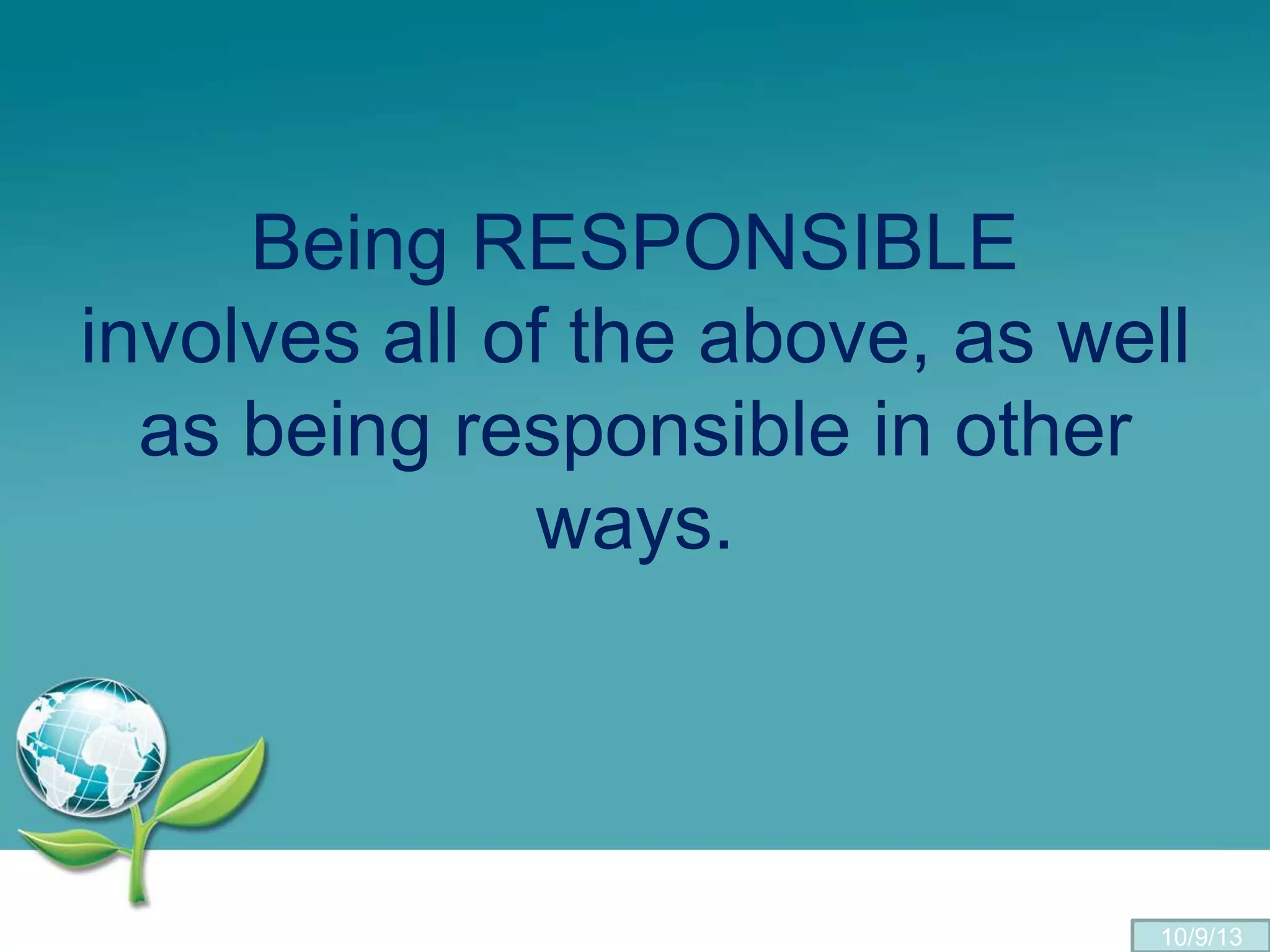The document provides tips for reducing paper usage in offices through the "3 E's" - being economical, environmental, and efficient. It recommends printing double-sided to cut costs in half, as well as tips like using electronic forms instead of paper, only printing necessary pages, keeping forms updated, and setting defaults to print double-sided. Implementing these paper-saving techniques can benefit the environment by reducing the impact of paper production and waste, as well as increase business efficiency.
